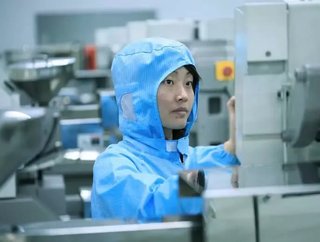The growing giant: Managing R&D in China

China’s economic growth over the past four decades has been enormous – at its centre lies success in manufacturing. Globally, a quarter (25%) of all products are made in China; manufacturing made up nearly a third of the Asian superpower’s GDP last year. Chemical manufacturing in particular produces huge amounts of the raw materials and chemicals needed to sustain the current economy. By 2020, China is expected to account for 40% of the global chemicals market with local companies increasingly dominating the market; latest figures show the number of foreign-owned chemical companies in China has fallen to less than 20%.
Chemical firms cannot risk losing market share to local competitors as the global importance of the Chinese market continues to grow. Domestic Chinese firms have proven successful in narrowing the quality gap with international competitors, and are capturing the growing middle market. As a result, there is greater pressure on foreign firms to introduce new, high-quality products specifically designed for China, in order to maintain their price premium. Meeting this need requires a deep understanding of the market, country and culture that products are being designed for – demands which require R&D be carried out in-country. To manage this shift, there are three key steps for companies looking to carry out effective in-country research on China.
1. Understanding the market
To be able to design a product for a specific market it is imperative to understand the landscape and customers. Yet, mastering China’s nuances is complicated. The competitive, dynamic landscape is changing faster than its more established Western counterparts. This has created a complex patchwork of regulatory frameworks which can be tough to navigate. Before even thinking about opening R&D centres, companies need to take the time to come to grips with the laws as they stand and what subsidies are currently available to support which research initiatives.
The unique political environment must also be considered. Innovation has been high on the agenda for the Chinese government. Various areas in which chemicals companies might look to conduct R&D – including fairly innocuous ones, such as new membranes for water treatment – can carry unexpected political implications not commonly found in Western markets. For instance, given rapidly tightening emissions standards, any projects involving large amounts of CO2 production are likely to be problematic. Knowing this in advance can save costly headaches down the line.
2. Finding unmet needs
After deciding on a speciality, finding a profitable niche in the market is the step. An example is the large Chinese markets of electronic chemicals and textile chemicals, where it is a challenge to secure a sufficiently high-quality water supply needed for manufacturing. Differences to Western markets mean that merely duplicating an international approach when working on China-specific projects is both impractical and wasteful. Companies must understand the majority of end-users are actively looking to improve their standard of living, but lack the levels of disposable income their Western counterparts have.
By reviewing the needs which are currently unmet by existing products – and targeting such markets – companies can come up with unique offerings. GE Healthcare’s portable ECG diagnostic machine, the MAC 1 is one highly cited example. The MAC 1 was able to be sold at a far more affordable price of $535 compared to far more expensive Western products by analysing the relative needs and cost restrictions of developing markets. To be able to provide new products ideally suited to the Chinese market, companies need to apply this approach to the chemicals market.
3. Location, location, location
Finally, in such a vast country, there is the question of where to set up shop. It takes substantial research to balance concerns such as cost and talent availability. The question of which cities are best able to deliver the required talent will depend at least somewhat on the focus of their research. In recent years, this has made Shanghai very popular for chemical companies due to the ease of sourcing both local and immigrant talent; whereas, due to its well-publicized pollution issues, Beijing has become less attractive. On the other hand, Apple recently eschewed both, preferring instead to locate its latest R&D centre in Shenzhen – the ‘Chinese Silicon Valley’.
Combined, these factors mean managing in-country R&D can be a complex undertaking. Yet multi-nationals cannot afford to delay. China is the future of the chemical manufacturing industry, with 1.3bn consumers and 100 million degree level educated workers – failure to take advantage of this large market will be incredibly costly for today’s market leaders. Companies cannot afford to wait around as China increases its shares of both global demand and the international talent pool – they need to get in-country R&D right or be left behind by competitors.
Christina Valimaki, Sr. Director, Chemicals Industry, Elsevier
- Crowe UK: 2024 Manufacturing Outlook Report Explores GrowthProduction & Operations
- Top 10: Chief Manufacturing OfficersProduction & Operations
- Aerospace Insight: Where does Boeing make all of its PlanesProduction & Operations
- Comau's Automation Solutions for Outside of ManufacturingAI & Automation






